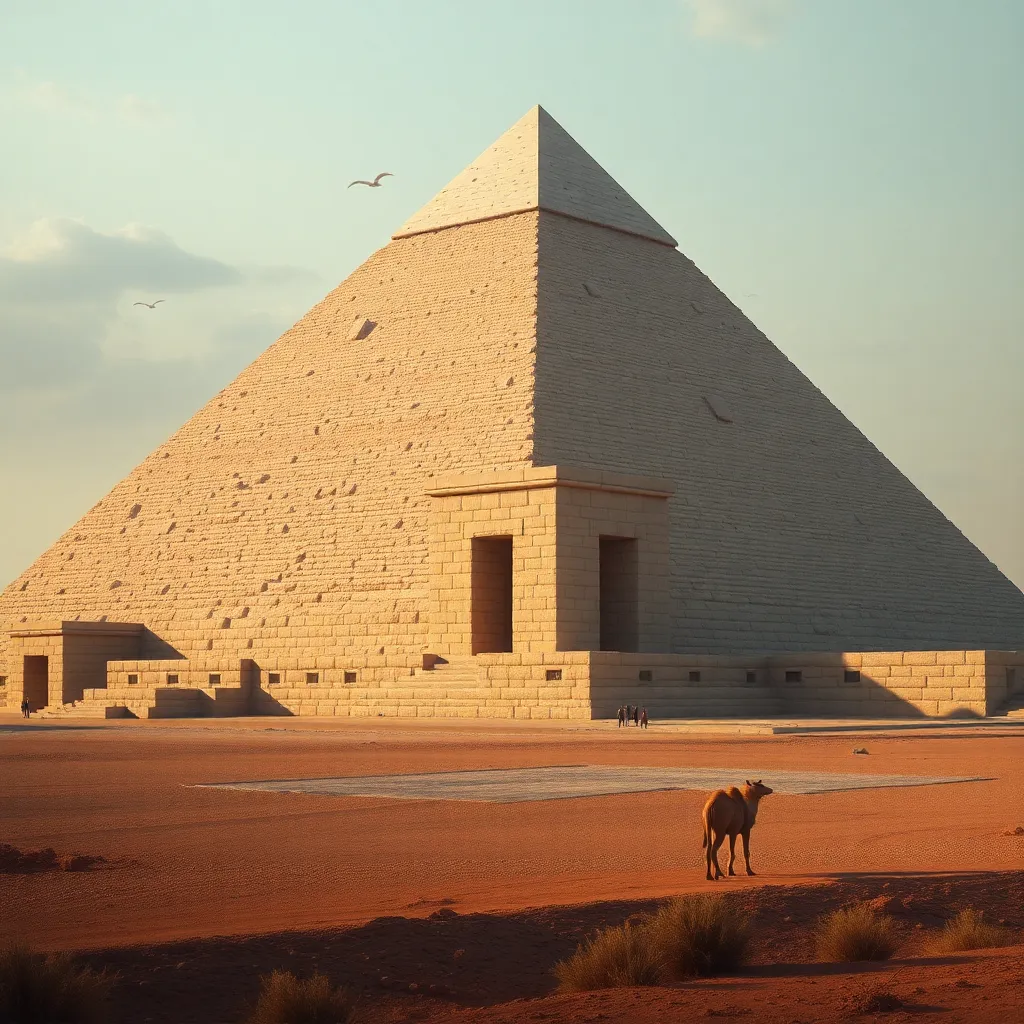The Pyramids: A Journey into the Heart of Egypt
I. Introduction
The pyramids of Egypt stand as monumental testaments to the ingenuity and ambition of ancient civilizations. They have captivated the imagination of scholars, historians, and tourists alike for centuries. These iconic structures, primarily located in Giza, serve not only as tombs for pharaohs but also as symbols of the ancient Egyptian civilization’s achievements in art, architecture, and religion.
This article aims to explore the rich history surrounding the pyramids, delve into their construction techniques, and examine their enduring legacy in both ancient and modern contexts.
II. Historical Context
The ancient Egyptian civilization flourished along the Nile River for thousands of years. Renowned for its remarkable achievements in various fields, this civilization constructed monumental architecture, developed a complex system of writing, and made significant advances in mathematics and medicine.
The pyramids played a crucial role in the societal and religious frameworks of ancient Egypt. They were not merely elaborate tombs but were integral to the Egyptians’ beliefs about the afterlife. Key historical figures associated with the pyramids include:
- Khufu (Cheops) – The pharaoh who commissioned the Great Pyramid of Giza.
- Khafre – Khufu’s son, known for building the second pyramid at Giza and the Great Sphinx.
- Menkaure – The builder of the third pyramid at Giza.
III. Architectural Marvels
The design and construction of the pyramids reflect the architectural prowess of the ancient Egyptians. They utilized a variety of pyramid structures, including step pyramids and true pyramids. The most famous of these is the Great Pyramid of Giza, which showcases the following impressive dimensions and features:
- Original height: 146.6 meters (481 feet)
- Base length: 230.4 meters (756 feet)
- Constructed from approximately 2.3 million blocks of stone
In comparison, other notable pyramids in Egypt include:
- The Pyramid of Djoser – The earliest colossal stone building in Egypt, located at Saqqara.
- The Red Pyramid – Known for its smooth, red limestone casing, situated in Dahshur.
- The Bent Pyramid – Famous for its unique shape, also located in Dahshur.
IV. Construction Techniques
The construction of the pyramids required vast amounts of resources and labor. The materials used primarily included:
- Limstone blocks for the outer casing
- Granite for the interior chambers
- Mortar and other binding materials
Theories regarding the organization of the workforce suggest that a large labor force consisting of skilled workers, rather than slaves, was employed. They were likely organized into teams and worked on a rotating basis, especially during the flooding season when agricultural work was minimal.
Engineering challenges such as transporting massive stone blocks and ensuring structural stability were addressed through innovative techniques, including the use of ramps and levers.
V. The Pyramids in Ancient Egyptian Religion
The pyramids served as tombs for pharaohs, reflecting the Egyptians’ beliefs about the afterlife. They were designed to facilitate the journey of the deceased into the afterlife, ensuring their continued existence alongside the gods. Funerary practices that accompanied pyramid burials included:
- Embalming and mummification to preserve the body.
- Burial goods such as jewelry, food, and tools to accompany the deceased.
- Rituals and offerings performed by priests to honor the dead.
The symbolism of the pyramids is deeply intertwined with the gods, particularly Osiris, the god of the afterlife, and Ra, the sun god. The pyramid’s shape is thought to represent the rays of the sun, serving as a means for the pharaoh’s soul to ascend to the heavens.
VI. Archaeological Discoveries
Numerous archaeological sites have yielded significant findings related to the pyramids, enhancing our understanding of ancient Egyptian culture. Major archaeological discoveries include:
- The uncovering of workers’ villages near Giza, providing insight into the lives of those who built the pyramids.
- Findings of burial artifacts and inscriptions that shed light on the funerary practices.
- Technological advancements such as ground-penetrating radar and 3D scanning that have revealed hidden chambers and structures within the pyramids.
These discoveries continue to reshape our understanding of the pyramids and their place within ancient Egyptian society.
VII. The Pyramids Today
Today, the pyramids face numerous challenges, including environmental factors and the impact of tourism. Preservation efforts are critical to maintaining these ancient structures, which include:
- Restoration projects to repair damage caused by erosion and human activity.
- Regulations to manage tourist access and minimize wear on the sites.
- Educational programs aimed at raising awareness of the importance of cultural heritage.
Tourism plays a dual role; while it contributes to the local economy, it also poses risks to the preservation of the pyramids. Modern interpretations of the pyramids continue to evolve, reflecting their enduring cultural significance as symbols of ancient ingenuity and spirituality.
VIII. Conclusion
The pyramids of Egypt encapsulate a rich tapestry of history, architecture, and culture. Their significance extends beyond their physical presence; they embody the beliefs, aspirations, and achievements of an extraordinary civilization. As we reflect on the ongoing fascination with these ancient wonders, it becomes evident that they are not merely relics of the past, but vital pieces of our shared human heritage.
Continuing exploration and preservation efforts are essential to ensure that future generations can appreciate the grandeur of the pyramids. The journey into the heart of Egypt is not just about understanding its history; it’s about preserving the legacy of a civilization that continues to inspire and intrigue the world.




